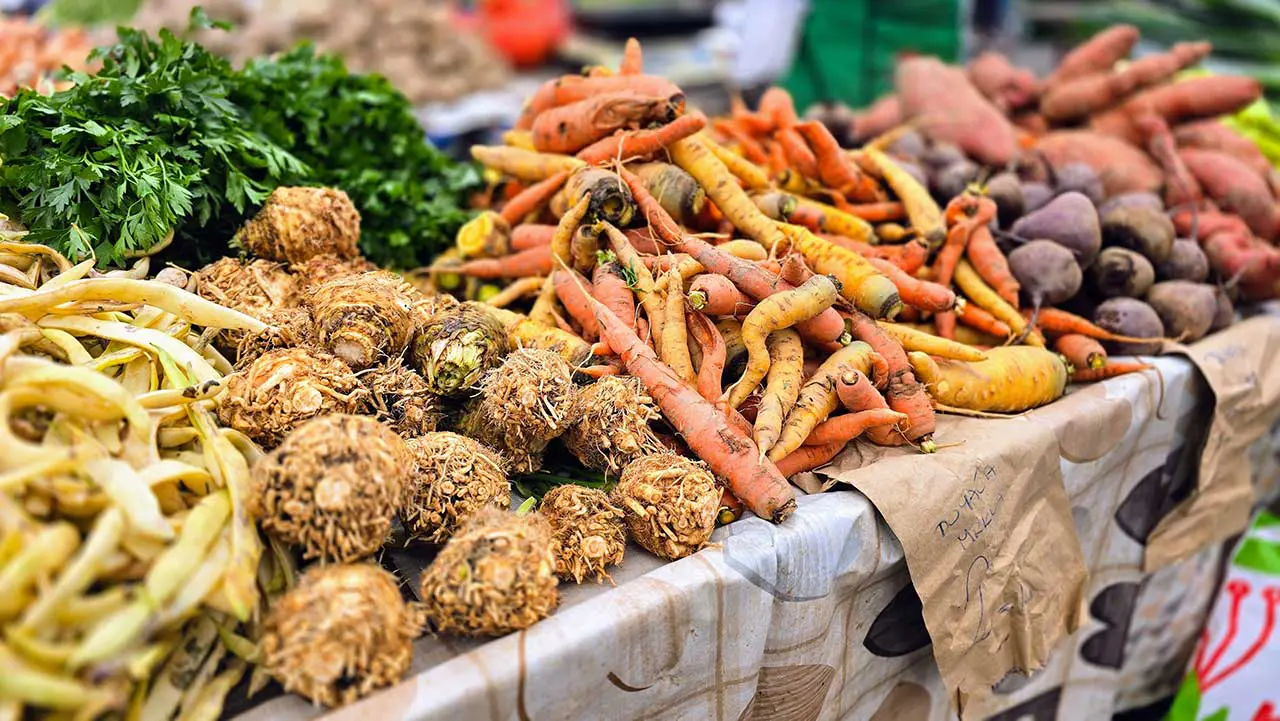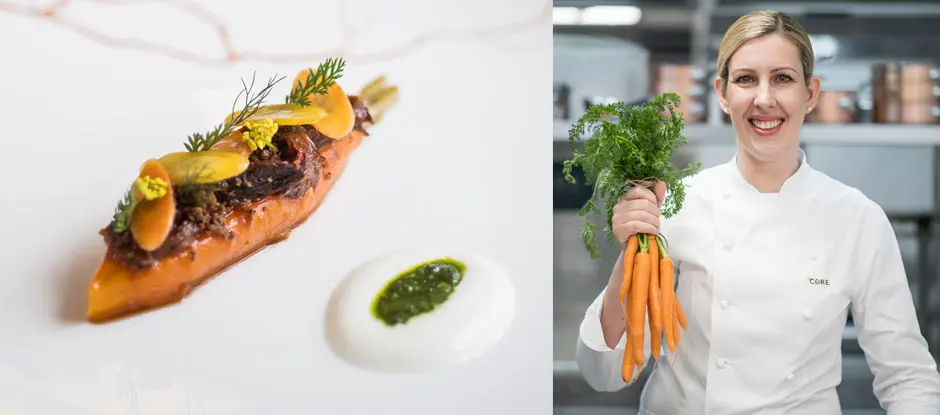
Luxury ingredients in fine dining can become repetitive, overshadowing true culinary skill. Some menus prioritize opulence over creativity, leading to a lack of surprise for diners. Chefs like Clare Smyth are showing that elevating everyday ingredients can be more impactful and refreshing in the world of high-end cuisine.
Rethinking Luxury, Skill, and Ingredient Intelligence in the Modern Kitchen
In the gilded world of fine dining, extravagance has long been synonymous with excellence. Caviar, lobster, foie gras, truffle – these ingredients are wielded like status symbols, peppered across tasting menus in a dazzling show of wealth and indulgence. They’re shorthand for luxury, designed to assure diners that no expense has been spared. But look more closely, and a different truth begins to emerge: repetition, predictability, and a worrying detachment from culinary substance.
In many modern tasting menus, opulence has become a formula. Scan a Michelin-starred menu and you’re likely to spot the usual suspects making multiple appearances — caviar in the canapé, again atop a tartlet, truffle shaved generously over risotto, and of course, lobster claw artfully balanced on a bisque foam. It’s a kind of culinary one-upmanship where ingredients do the talking, not technique. But is this really the apex of fine dining, or just the illusion of it?
At a time when diners are increasingly discerning, chefs have a choice to make: follow the golden path of extravagance, or return to the roots of cooking — where mastery is proven not by price per gram, but by what can be done with the everyday.
The Caviar Problem: When Luxury Replaces Thought
There’s no denying the power of luxury ingredients. They catch the eye, elevate a menu price, and offer diners a sense of celebration. But when repeated across multiple courses, they can lose their magic and start to feel more like a crutch than a creative choice.
The classic rule of menu planning — avoid repeating main ingredients — is too often set aside in favour of impact. And while there’s a time and place for opulence, relying on it too heavily risks blunting the palate and, more importantly, eroding the space for true skill. When was the last time you were surprised by caviar? Or truly impressed by another truffle garnish?
More diners and critics are noticing this too. There’s a growing sense that some tasting menus use luxury ingredients “for luxury’s sake” — not because they enhance the dish, but because they justify the price tag. It’s culinary accounting dressed as creativity.
Which is why, when a chef chooses to elevate the ordinary — to take something humble, seasonal, and simple, and raise it to centre stage — it’s worth paying attention.
Clare Smyth’s Lamb Carrot: A Case Study in Culinary Intelligence
Walk into Core by Clare Smyth, the acclaimed Notting Hill restaurant, and you won’t just find luxury — you’ll find precision, intention, and a profound respect for ingredients. Nowhere is this clearer than in one of Smyth’s signature dishes: the Lamb Carrot.

At first glance, it appears unassuming. A carrot, perfectly glazed, served with lamb jus and accompaniments that shift with the season. But it’s in the details that the dish reveals itself as a quiet revolution. The carrot is slow-cooked in lamb fat — a technique that imparts it with richness and depth, subtly echoing the texture and flavour of meat. It becomes, in a sense, a meaty carrot: vegetal in form, savoury in tone, and nostalgic in its resonance.
Here, Smyth isn’t disguising the carrot — she’s elevating it by understanding it. By cooking it in lamb fat, she mirrors the flavour development of meat, creating a dish that references both tradition and innovation. It’s a culinary wink to the British Sunday roast, reframed through modern technique and sustainability. No need for wagyu or gold leaf — this is a dish that shows its value through thought, not excess.
It’s also a lesson in lateral thinking. Rather than reaching for a high-cost centrepiece, Smyth asks: what else can stand up to the same level of scrutiny, attention, and transformation? That question alone requires a deeper connection to ingredients — one that young chefs should be taught to nurture.
Skill Beyond Cost: What Are We Really Teaching?
There’s an uncomfortable truth in many kitchens and culinary schools: young chefs often learn that to impress, they must use luxury. But the real measure of a chef isn’t what they can do with caviar — it’s what they can do with a carrot.
Working with luxury ingredients is relatively easy. They come with built-in cachet and flavour. A sliver of truffle or spoonful of caviar carries its own identity; it doesn’t need to be developed. In contrast, elevating a humble vegetable, a grain, or a cut of offal demands technique, creativity, and confidence. It requires the chef to build flavour, not buy it.
This is the crux of what we should be teaching the next generation of chefs. Luxury isn’t about price — it’s about process. The ability to transform the overlooked into the unforgettable is what defines great cooking. And yet, many young chefs are taught to balance food costs rather than flavour profiles, learning to menu-plan around margins and “premium appeal” rather than around narrative, sustainability, and skill.
If we continue to teach that the path to a Michelin star lies in the truffle slicer’s shadow, we’ll lose something vital: the ability to cook with purpose and integrity.
The Return to Ingredient-Led Cooking
Fortunately, not all is lost. Across Europe and beyond, a quieter, more considered food movement is growing — one that places ingredient understanding above luxury excess.
Chefs across Europe are leading a quiet but powerful shift in fine dining — one where modest, seasonal ingredients are treated with the same reverence once reserved for foie gras and langoustine. Alain Passard at L’Arpège in Paris has been a pioneer in this space, famously removing red meat from his menu in 2001 and building a three-Michelin-starred repertoire around garden-grown produce. Dishes like his beetroot tartare or smoked celeriac ‘steak’ show how earthy vegetables, when handled with precision and imagination, can be utterly transformative.
In the UK, Simon Rogan at L’Enclume crafts entire tasting menus using ingredients grown on his own farm in the Lake District. His dish of salt-baked turnip with aged beef fat and nasturtium is a masterclass in balance — turning a root vegetable into a centrepiece through technique, flavour layering, and restraint. Similarly, Ana Roš at Hiša Franko in Slovenia puts wild herbs, river trout and mountain dairy at the heart of her cooking, with dishes like fermented corn polenta with whey and lardo showcasing deep local knowledge and minimal waste.
In the Basque Country, Elena Arzak continues her family’s tradition of innovation with ingredients like charcoal-roasted leeks or anchovy-stuffed courgette flowers, elevating everyday components into high culinary art. Meanwhile, in Copenhagen, Rasmus Kofoed at Geranium has built an entirely meat-free, three-Michelin-star menu using ingredients like Jerusalem artichokes, grains, and cabbage — proving that vegetables can deliver complexity, luxury, and elegance when treated with vision and discipline.
They each explore the intersection of flavour and farming, showing how heritage grains and overlooked cuts hold immense culinary potential.
In all these cases, the emphasis is on deep ingredient knowledge. These chefs know their produce intimately — where it’s from, how it grows, when it’s at its best. They rely not on imported luxury, but on their ability to coax greatness from the ground beneath their feet. This is luxury redefined: an experience rooted in terroir, creativity, and craft.
A Better Way Forward: What We Owe Our Young Chefs
There’s a real opportunity here — not just to change what ends up on the plate, but to shift what gets passed down in kitchens and classrooms. If we want the future of fine dining to be more sustainable, more inventive, and more grounded in actual cooking, we need to instil a few key lessons:
The Power of Restraint
When Clare Smyth serves a carrot, she isn’t offering less — she’s offering more. More thought, more technique, more meaning. Her Lamb Carrot shows that luxury can be achieved through restraint and intelligence, not just abundance. It’s a powerful reminder that fine dining doesn’t have to be decadent to be impressive.
As chefs, educators, and diners, we need to ask: are we celebrating real culinary skill, or are we just admiring expensive ingredients dressed in clever lighting?
If the goal of great food is to create connection — between people, places, memories, and senses — then perhaps the most important thing a chef can do is to stop hiding behind truffles and start paying attention to what’s already in the fridge.
Because when you can make a carrot taste unforgettable, that’s when you know you’re really cooking.

At Med.kitchen, our passion lies in crafting exceptional culinary experiences through our online platform. We specialise in sharing a wealth of knowledge via articles, recipes, courses, and online mentoring, aiming to inspire both novice and seasoned chefs alike. Our focus has shifted from private dining to being an online source of gastronomic inspiration, allowing you to explore and refine your culinary skills from the comfort of your home..